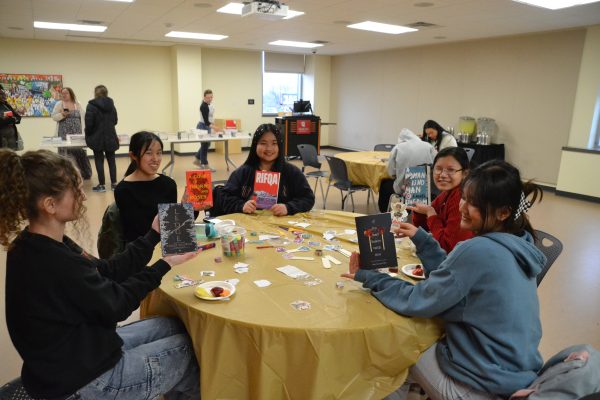Imagining a world without walls
Professors hold panel to discuss Wiedenhofer collection.

Reynolds, Dusenbery and Embser-Herbert speak about walls amid Wiedenhofer’s photographs.
November 26, 2014
Walls are everywhere. From the supports that give shelter to the social constructs that label and divide, walls play a significant role in day-to-day life and usually in a negative way. Artist Kai Wiedenhoefer sought to document the different roles of walls across the globe in photographs. Her collection was on display in Anderson for three days last week. Professors Melissa Embser-Herbert, Mike Reynolds and Van Dusenbery held a panel discussion during convo hour on Thursday to discuss the subject further.
Dusenbery discussed the way globalization began to take off after the fall of the Berlin Wall, but not all walls can simply be torn down. He raised the question of how to transverse invisible barriers that were historically constructed.
“Walls haven’t all fallen down. Walls still exist there, whether they be physical or…walls between cultures,” Dusenbery said.
Embser-Herbert shared a personal story of her experience with blockades and boundaries during her time in the army, but also of how she was treated as a feminist in the military. She said she often felt like she was walking with a foot on either side of a wall and had to choose to be either a soldier or feminist because “labels create walls.”
She said many walls serve an important purpose, such as ensuring order and structure, but those cases are less common than the negative ones.
“Respecting a certain boundary is important, but I would argue that there are more times when it’s disruptive,” Embser-Herbert said.
Reynolds addressed the subject of walls within a home. He said multi-room houses develop in conjunction with the idea of Westernization. He said having walls is a luxury and they’re not meant to divide in the same way.
Embser-Herbert posed a question to the crowd for everyone to think about.
“What are the walls for you, particularly when it comes to identity?” Embser-Herbert said. What role do they play? When should they come down? When are they good for you?”
The exhibit, which was part of International Education Week, was sponsored by the city of Berlin and International and the Off-Campus Programs office.





